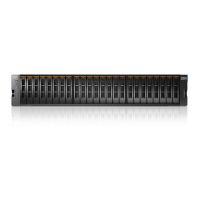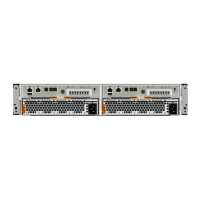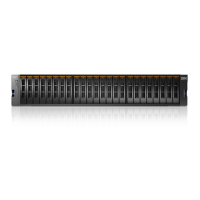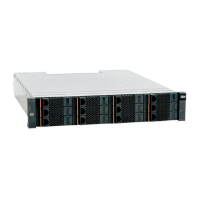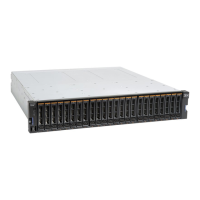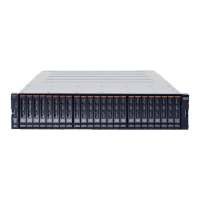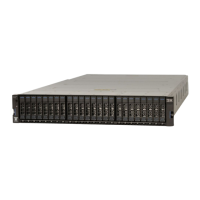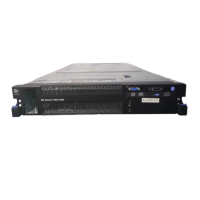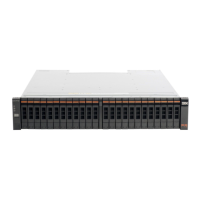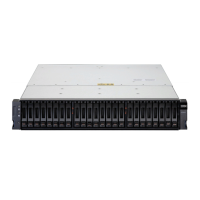496 Implementing the IBM Storwize V5000 Gen2 with IBM Spectrum Virtualize V8.1
10.3.4 FlashCopy indirection layer
The FlashCopy indirection layer governs the I/O to the source and target volumes when a
FlashCopy mapping is started, which is done by using a FlashCopy bitmap. The purpose of
the FlashCopy indirection layer is to enable the source and target volumes for read and write
I/O immediately after the FlashCopy is started.
To show how the FlashCopy indirection layer works, we examine what happens when a
FlashCopy mapping is prepared and then started.
When a FlashCopy mapping is prepared and started, the following sequence is applied:
1. Flush the write cache to the source volume or volumes that are part of a Consistency
Group.
2. Put cache into write-through mode on the source volumes.
3. Discard cache for the target volumes.
4. Establish a sync point on all of the source volumes in the Consistency Group (which
creates the FlashCopy bitmap).
5. Ensure that the indirection layer governs all of the I/O to the source volumes and target
volumes.
6. Enable cache on the source volumes and target volumes.
FlashCopy provides the semantics of a point-in-time copy by using the indirection layer, which
intercepts I/O that is directed at the source or target volumes. The act of starting a FlashCopy
mapping causes this indirection layer to become active in the I/O path, which occurs
automatically across all FlashCopy mappings in the Consistency Group.
The indirection layer then determines how each I/O is to be routed, based on the following
factors:
The volume and the logical block address (LBA) to which the I/O is addressed
Its direction (read or write)
The state of an internal data structure, the FlashCopy bitmap
The indirection layer allows the I/O to go through to the underlying volume, redirects the I/O
from the target volume to the source volume, or queues the I/O while it arranges for data to be
copied from the source volume to the target volume. To explain in more detail which action is
applied for each I/O, we first look at the FlashCopy bitmap.
FlashCopy Consistency Groups
per system
255 This maximum is an arbitrary limit that is policed
by the software.
FlashCopy volume capacity per
I/O Group
4 pebibytes
(PiB)
This maximum is a limit on the quantity of
FlashCopy mappings that are using bitmap space
from this I/O Group. This maximum configuration
uses all 4 gibibytes (GiB) of bitmap space for the
I/O Group and allows no Metro or Global Mirror
bitmap space. The default is 40 tebibytes (TiB).
FlashCopy mappings per
Consistency Group
512 This limit is because of the time that is taken to
prepare a Consistency Group with many
mappings.
FlashCopy property Maximum Comment

